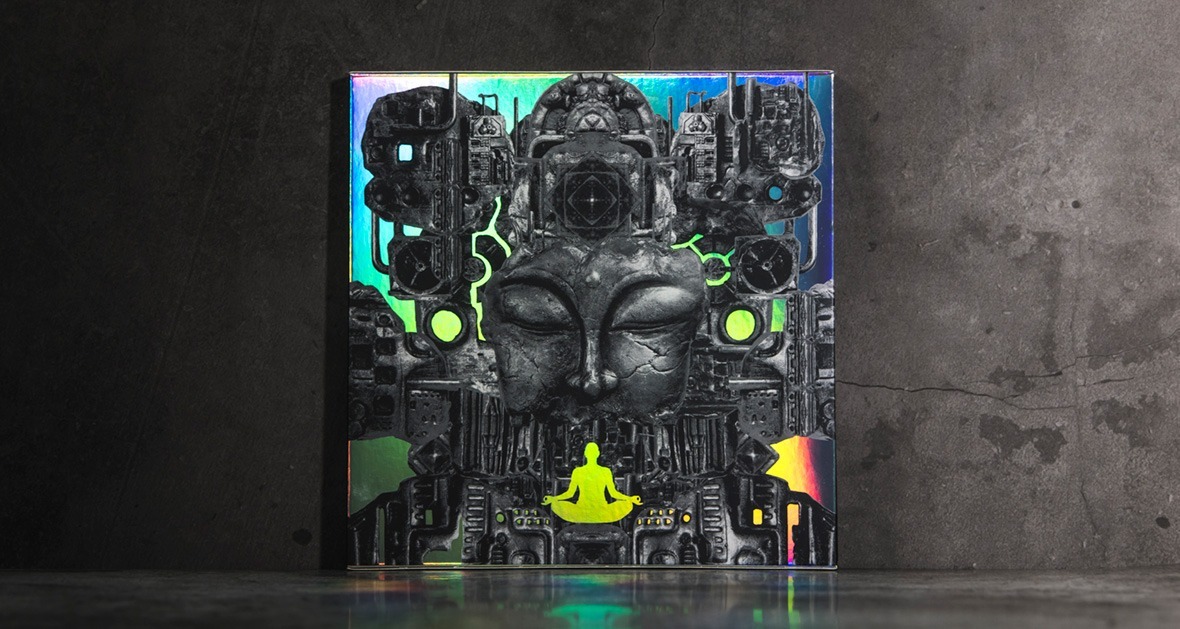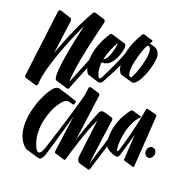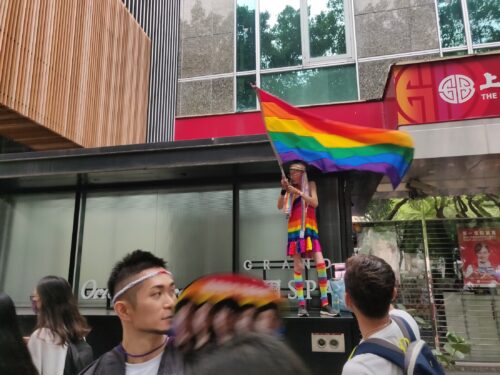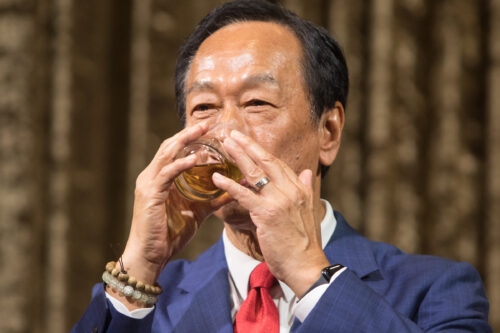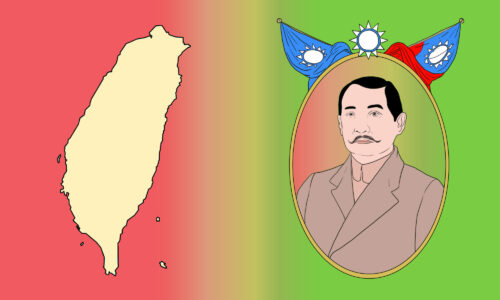This article was originally published on Neocha and is republished with permission.
Novelty is undeniably important in art. The never-ending pursuit of the new—new styles, new mediums, new thoughts—is one of the main reasons art stays exciting. But using these new ideas to pull traditional culture into modern times can help us stay connected with the past. Taiwanese artist Yi-Shang Zhao’s work is a prime example of this, blending contemporary graffiti and modern graphic design with ancient Chinese techniques and traditional religious art.

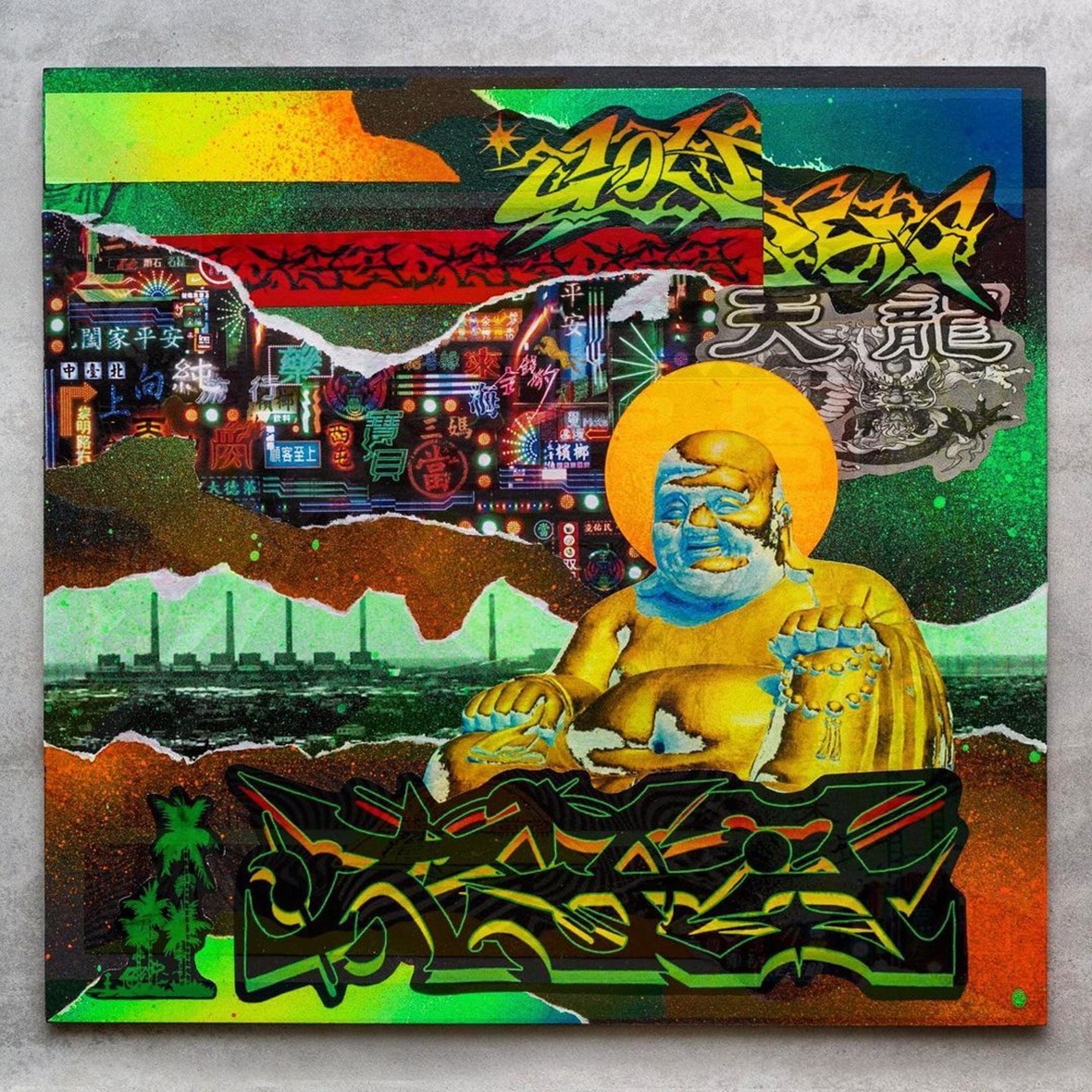
Zhao, who uses the alias Blackzao, works across multiple mediums. He spray paints on walls and canvas, creates graphic design and digital illustration, paints with acrylics and brushes, and assembles intricate collages. Within these disparate mediums, he pushes his style in different directions. At first, it may seem scattered, but there’s a method to the madness. Across his wide-ranging works, consistent interests and themes emerge. The same psychedelic colors, mountainous landscapes, prolific text, and Buddhist icons appear repeatedly.

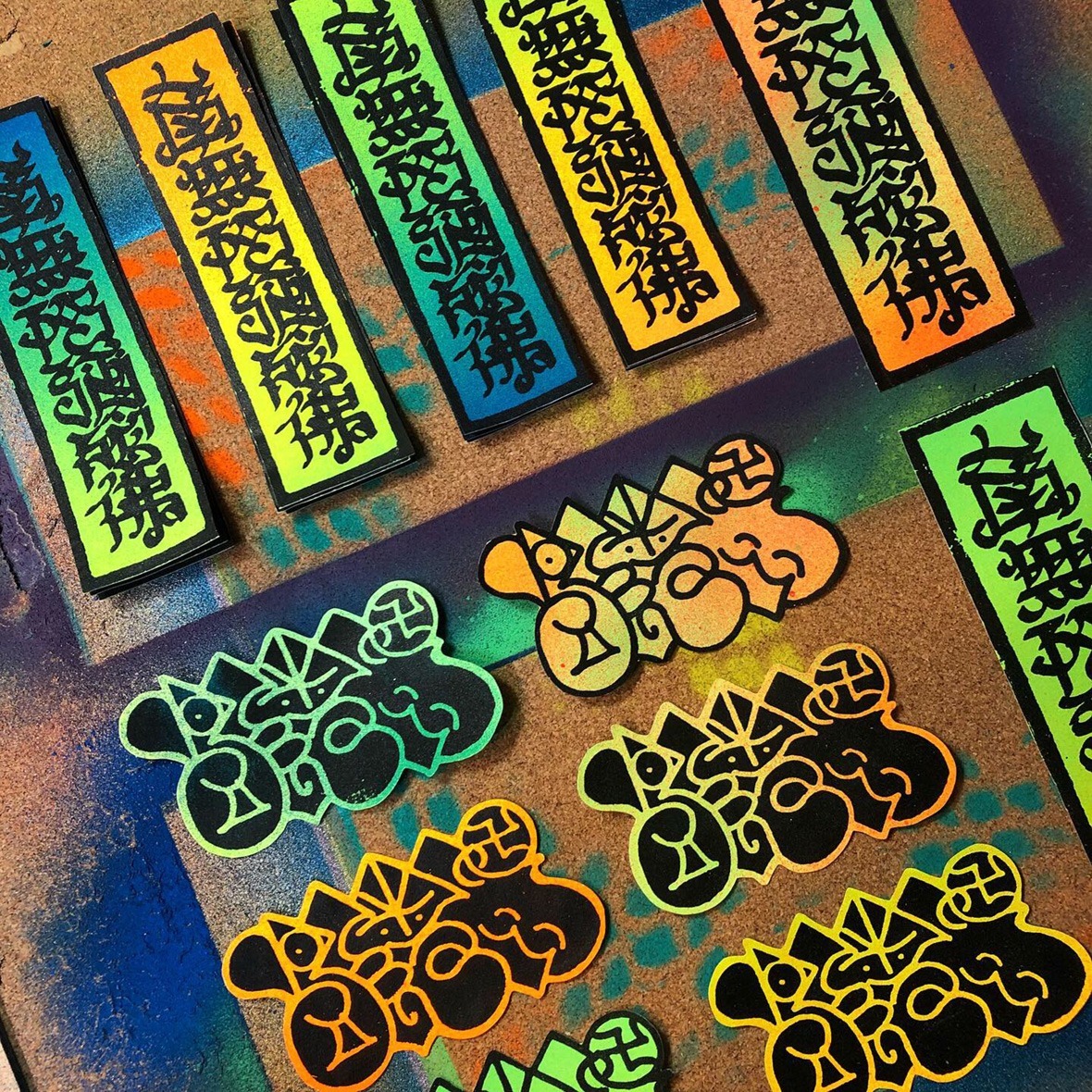

For the burgeoning artist, it all started with graffiti. As a teen in Taichung, Zhao became enamored with the spray can after being exposed to skateboarding and hip-hop culture. Back then, all of his work was written in English, with an aesthetic thoroughly influenced by American wildstyle and old-school graffiti. But his interest in graf led to a broader engagement with letterform.
“In the beginning, I wrote in a traditional graffiti lettering style, but I added the stylistic strokes and structures of Chinese characters to my English letters,” Zhao says. Learning graphic design and digital art in university furthered his knowledge of fonts and scripts, which he happily added to his arsenal of lettering styles. Calligraphy and type-driven art became a consistent feature of his work.
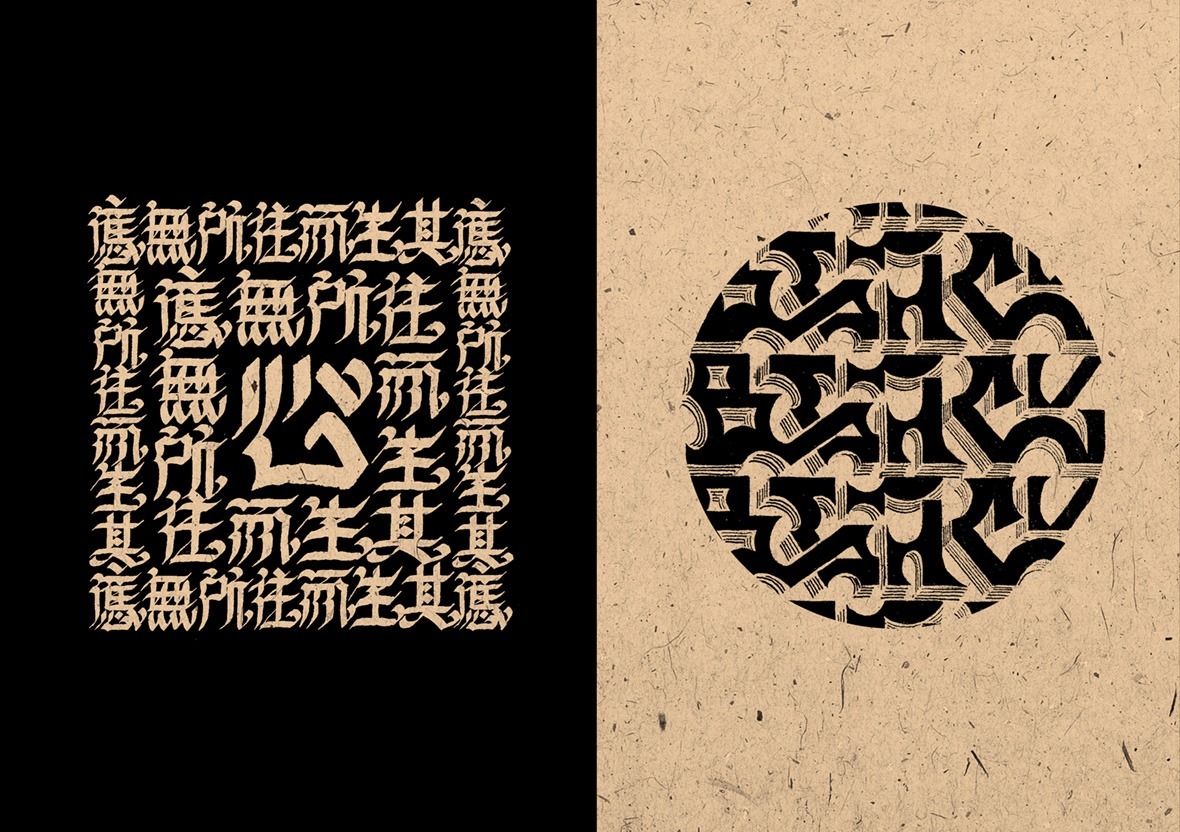

When it comes to calligraphy, Zhao now mainly writes in Chinese, although he originally started by writing in English here too. “It’s different from graffiti,” he explains. “There are too many details in Chinese characters to use in graffiti, but I’m working on making it happen.” His calligraphy often concerns Buddhist mantras and sometimes it’s just random words that stem from his love for text. A lack of legibility can be equally compelling to him. “I’ve studied some religious art and ancient Taoism calligraphy. It can be very similar to graffiti: sometimes you can read it, but other times it just looks like symbols. I find it interesting on many levels.”




Zhao is adamant about uncovering ways to combine the past with the future, the East with the West. (It may have been inevitable that he would find the connection, given that one of his family members is a master of religious art.) “I love using colors I see in Taiwanese streets, whether that’s bold and bright LED lights, or traditional colors like those found in local temples, which are also fluorescent. The stage art for temple puppet shows have very strong and psychedelic colors, and I grew up with that, so it’s very special to me.” He also paints works inspired by traditional East Asian calligraphy landscapes, whether as the focus of a black and white mural, or hidden within a burner, masquerading as a design within the letters’ fill.
Even though he’s continually expanding his visual language, Zhao has remained faithful to his graffiti roots. He still paints throw-ups on interesting structures and conceptual pieces on textured walls: “Taichung is a very chill city, there are a lot of places you can paint in the daytime,” he says. “We also have some very positive writers here.”
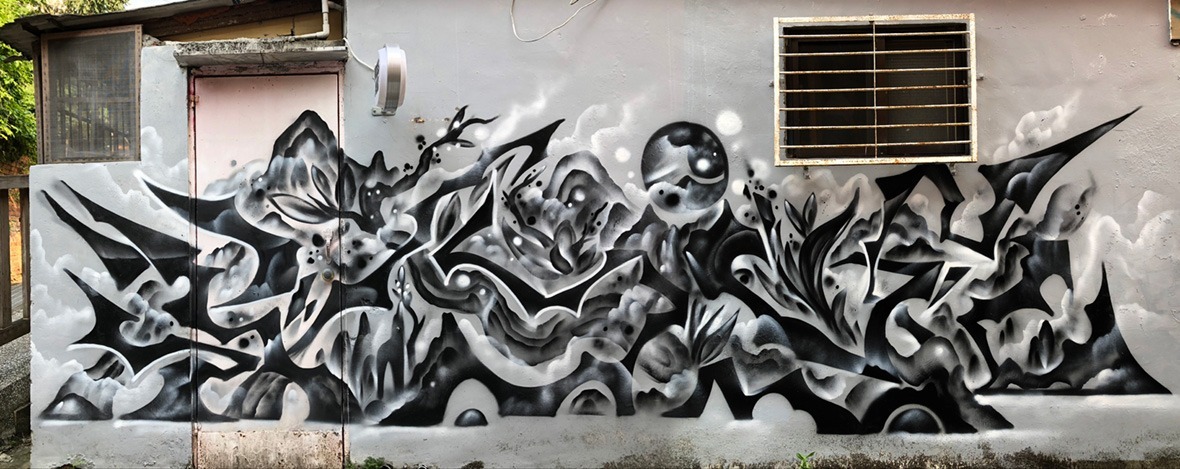

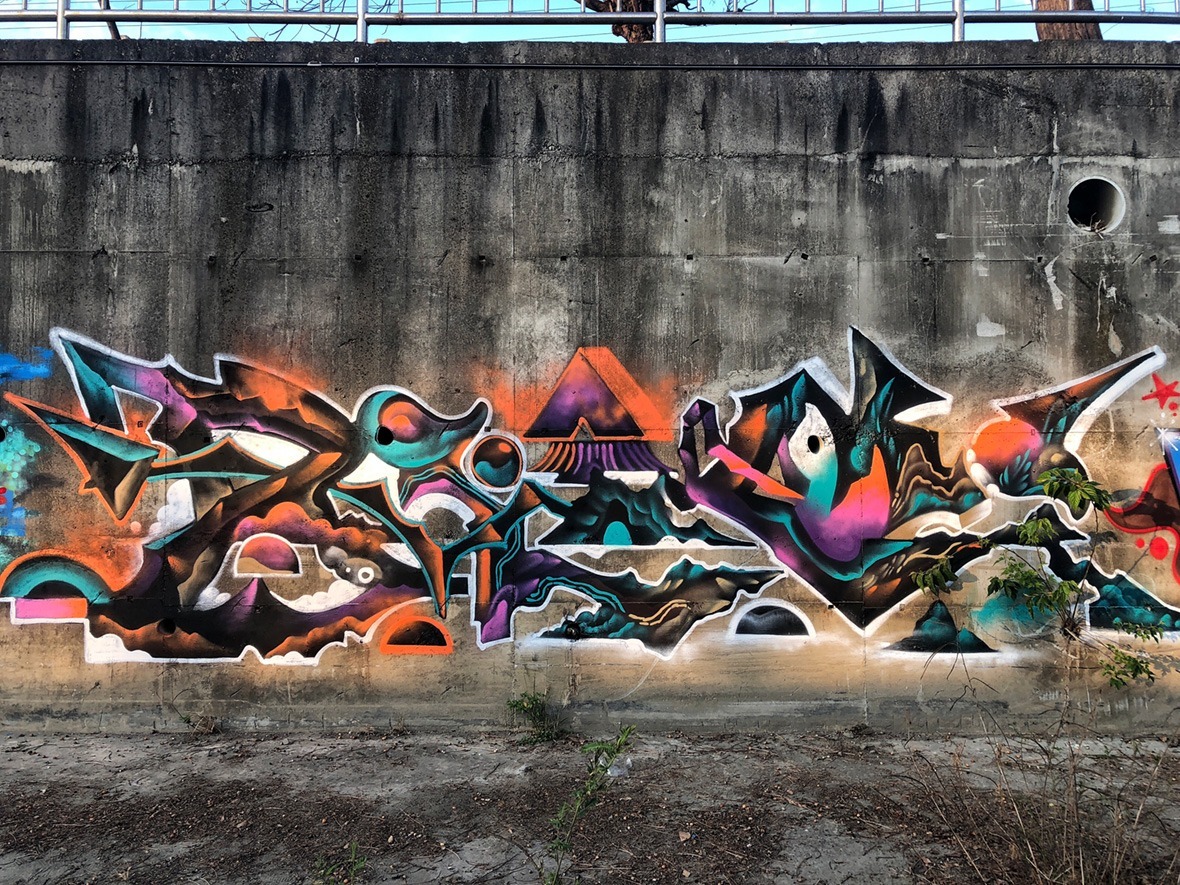

Like this story? Follow neocha on Facebook and Instagram.
Instagram: @blackzaoart
Contributor: Mike Steyels
Chinese Translation: Olivia Li
